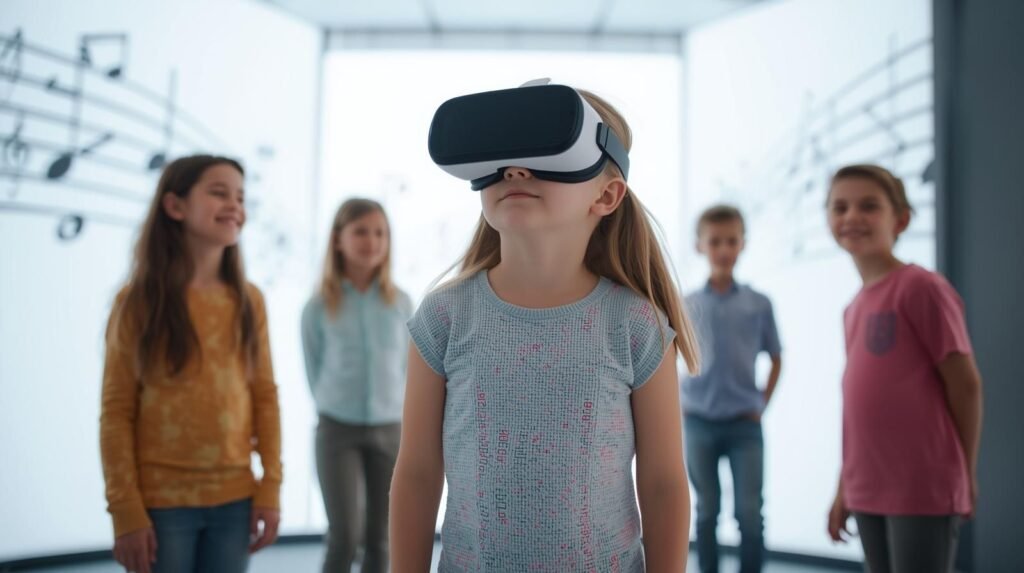Introduction
Some people quietly follow the rules. Others? They walk into a room, take one look around, and decide the rules need rewriting. That’s the story behind Daniel R Locke Virtual AIA. At first glance, his name might sound like another architect with some letters tacked on the end of it (AIA, for those not in the know, is the American Institute of Architects). But spend a few minutes digging deeper, and you’ll realize this isn’t about a title. It’s about a movement.
Daniel R Locke isn’t just drafting lines on a page—he’s reimagining how we experience architecture before it even exists. And let’s be honest, in today’s digital-first world where we order groceries online, binge-watch shows from our couch, and tour apartments via video calls, why should architecture stay stuck in the past? This is where Locke’s story gets exciting: he’s proving that virtual design isn’t some futuristic gimmick—it’s a practical, powerful tool that changes the game for everyone involved.
Who Exactly Is Daniel R Locke Virtual AIA?
Let’s clear up the jargon. The “AIA” stands for the American Institute of Architects, a respected organization that represents excellence in architecture. Being part of it is no small deal—it means you’re operating at a certain professional level.
Now, add “virtual” into the mix. That’s where Locke separates himself from the crowd. He isn’t tied to just drafting traditional blueprints or presenting static models. Instead, he leans heavily into digital and immersive tools—things like 3D models you can explore, VR walkthroughs, and collaborative platforms that let you tweak designs in real time.
So who is he? In plain English: he’s an architect who doesn’t just build walls; he builds experiences. And that’s a big difference.
The Digital Shift in Architecture (and Why It Matters)
Let’s rewind for a second. Traditional architecture was, in many ways, beautiful. The smell of pencil and paper, the careful hand-drawn sketches, the tactile feel of models—there’s a certain romance to it. But it also came with baggage: endless revisions, stacks of paper, expensive mistakes, and a lot of guesswork for clients trying to imagine what the final space would look like.
Now? Things are changing fast. We’ve got the tools to not only see a design before it’s built but to experience it. Want to walk through your future office? Pop on a VR headset. Curious how the sunlight will hit your kitchen in the morning? A simulation can show you instantly.
Here’s the difference at a glance:
| Old School | Virtual Approach |
|---|---|
| Paper blueprints | Interactive 3D models |
| Endless site visits | VR/AR walkthroughs |
| Expensive physical prototypes | Cost-effective digital simulations |
| Revisions take weeks | Changes update instantly |
| “Imagine this room” | “Walk through it right now” |
Daniel R Locke Virtual AIA sits squarely on the digital side of this table. And that’s where the future is headed.
Why Locke’s Approach Stands Out
Sure, plenty of architects use tech these days. But here’s where Locke shines—he doesn’t treat technology as a gimmick or a flashy extra. He uses it as a natural extension of the design process. Let’s break it down:
- He designs for emotion, not just function.
Every project tells a story. You don’t just see the design—you feel it. - He works without borders.
Clients can be in New York, Tokyo, or Sydney—it doesn’t matter. Virtual spaces erase distance. - He’s eco-conscious.
By going digital, there’s less wasted material and fewer unnecessary site visits. Good for the planet, good for the client. - He’s ahead of the curve.
While others are catching up, Locke is already proving that virtual-first design isn’t the future—it’s the present.
Read more: DevSteed Script Codeslide
Storytelling in Architecture: A Hidden Superpower
One of the quirkiest, most refreshing things about Locke’s approach is how he weaves storytelling into design. He doesn’t just ask, “How big should this room be?” He asks, “What feeling should this room create?”
Take a library, for example. Instead of making it just rows of shelves and tables, imagine winding corridors that feel like chapters in a book, or cozy alcoves that practically whisper “curl up and stay a while.” That’s not just architecture—that’s storytelling. And it’s a skill Locke carries into every project, virtual or otherwise.
Virtual AIA in the Real World
“Okay,” you might be thinking, “cool concept, but how does this actually play out?” Great question. Let’s run through a few real-world examples of where Daniel R Locke Virtual AIA makes a difference:
- Homes: Homeowners can “walk” through their house before construction even begins, avoiding costly redesigns later.
- Offices: Businesses test out floor plans, see how people might move through spaces, and adjust before anyone spends a dime.
- Public Projects: Communities can view proposed designs (like parks or libraries) in a virtual environment and give input—making the process more democratic and transparent.
This isn’t just useful—it’s revolutionary.
The Skeptics (Because There Always Are Some)
Not everyone’s on board with virtual architecture. Some traditionalists swear by pen and paper. And to be fair, there’s something special about hand-drawn sketches. But here’s the thing: clients aren’t buying nostalgia—they’re buying clarity and confidence.
Think about it. If you were building your dream home, would you rather look at a 2D sketch and try to imagine the kitchen… or walk through it virtually and see where the sunlight hits at 7 a.m.? Exactly. Locke’s work bridges that gap between imagination and reality.

The Magic of Virtual Collaboration
Here’s another overlooked perk: collaboration. In the past, architects, clients, and contractors might trade dozens of emails, argue over blueprints, or sit through marathon meetings. Locke flips that script. He creates shared virtual rooms where everyone can hop in, explore, and tweak designs together.
It’s faster. It’s smoother. And dare I say, it’s actually kind of fun.
A Glimpse Into the Future
Here’s my honest take: virtual isn’t going away. Just like remote work and online shopping became the norm, virtual architecture is carving out its permanent spot. As VR headsets get cheaper, AI tools get smarter, and clients get more tech-savvy, architects like Daniel R Locke Virtual AIA won’t just be ahead of the curve—they’ll set the curve.
We’re talking about a future where design is interactive, collaborative, and deeply personal. And Locke’s work is already giving us a preview of that future.
Conclusion
At first glance, Daniel R Locke Virtual AIA might sound like another professional label. But dig a little deeper, and it becomes a story of reinvention—of how one architect embraced digital tools not as a crutch, but as a canvas for creativity.
Locke proves that architecture isn’t just about walls, roofs, and doors. It’s about stories, emotions, and shared experiences—whether those experiences happen in a meeting room or a virtual one. And maybe that’s the real hidden power here: the ability to remind us that technology, at its best, doesn’t replace the human touch—it amplifies it.
FAQs
1. What does “Virtual AIA” mean with Daniel R Locke?
It refers to his blend of AIA-certified expertise with virtual design methods like 3D modeling and immersive walkthroughs.
2. How do clients benefit from his approach?
They get clarity before building starts, avoid costly mistakes, and enjoy a smoother, more collaborative process.
3. Is virtual architecture only for big projects?
Not at all—homeowners, small businesses, and even communities can benefit from it.
4. Why is this approach eco-friendly?
Fewer physical prototypes, less paper, and reduced travel mean a greener design process.
5. What makes Locke different from other architects?
His focus on storytelling, emotion-driven design, and seamless virtual collaboration set him apart.
Thanks for Visit Techywil











